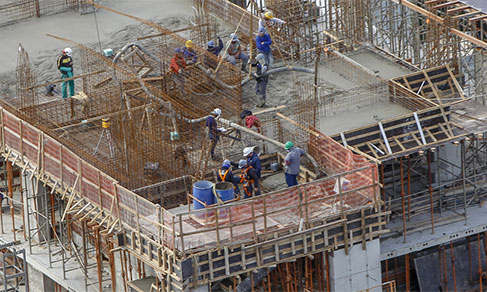Monthy Survey of Services
Services shrink 1.2% in October and record two months in a row of negative rates
December 14, 2021 09h00 AM | Last Updated: December 15, 2021 04h53 PM

The services sector retreated 1.2% from September to October, the second consecutive negative rate, accumulating a decrease of 1.9%. With the result of October, the sector was still 2.1% above the pre-pandemic level, registered in February last year, but it is 9.3% below the record reached in November 2014. Data are from the Monthly Survey of Services (PMS), released today (December 12) by the IBGE.
“This loss does not eliminate the 6.2% gain observed in the April-August period, but it reduces the distance from the pre-pandemic level. In August, the sector was 4.1% above the level of February 2020, rising to 3.3% in September and 2.1% now in October”, highlights Mr. Rodrigo Lobo, survey manager.
Four of the five activities investigated decreased in October, with a highlight to information and communication services (-1.6%), which presented the second consecutive negative rate, accumulating a decrease of 2.5%.
“The segment that showed the main negative impact was telecommunications. This drop is explained by the increase in landline telephone rates, which increased by 7.33% this month. This pressure coming from prices, ended up impacting the volume indicator of the subsector”, explains Mr. Lobo.
Another activity that pulled the index down was that of other services, with a drop of 6.7%, also the second in a row, accumulating a loss of 12.7%. “This is a very heterogeneous activity and this month was mainly impacted by the lower revenue of companies operating in the post-harvest phase, processing agricultural products, and also by the drop in securities brokerages.
On the other hand, services rendered to families grew by 2.7% between September and October, recording the seventh consecutive positive result and accumulating 57.3% growth in this period.
“This was the activity mostly affected in the hardest months of the pandemic, as it includes face-to-face services. Little by little, with the advance of vaccination and increased mobility of people, accommodation and food services have grown, but even so, it is the sector that is furthest from the pre-pandemic level, 13.6% below the level of February 2020”, contextualizes the researcher.
In relation to October 2020, the services sector increased 7.5%, with growth in four of the five activities. “This was the eighth positive rate in a row, but with a slowdown in the growth rate”, highlights Mr. Lobo. In the year, the sector presents an increase of 11.0%, with growth in all sectors. “In this comparison, we have the effect of the low base of comparison. While industry and trade started to recover in the second half of 2020, the first positive rate in the services sector, in the year-on-year comparison, recovery only occurred in March 2021, a month in which services grew by 4.6%", he points out.
Regionally, most (23) of the 27 Federation Units had a retraction in the volume of services in October 2021, compared to the immediately previous month. Among the places with negative rates, the most important impact came from Rio de Janeiro (-3.2%), followed by São Paulo (-0.5%), Rio Grande do Sul (-4.0%), Paraná ( -2.1%) and Mato Grosso (-6.0%). On the other hand, Ceará (1.4%) registered the main expansion in regional terms.
Tourism activities grow 1.0% in October
The index of tourism activities grew 1.0% compared to September, the sixth consecutive positive rate, a period in which it accumulated gain of 51.2%. However, the tourism segment is still 19.5% below the level of February last year. “This index of tourism activities has a profile very similar to the profile of services rendered to families, as many of the activities that make up the indicator come from this segment”, observes the researcher.
Regionally, six of the 12 locations surveyed followed this expansion movement. The most relevant positive contribution came from São Paulo (1.1%), followed by Minas Gerais (1.8%). In the opposite direction, Bahia (-7.2%) and the Federal District (-10.1%) had the most important negative results of the month.
More about PMS
The PMS produces indicators that make it possible to monitor the current behavior of the services sector in the country, investigating the gross revenue from services in formally constituted enterprises, with 20 or more employed persons, whose main activity is a non-financial service, excluding health and education. There are results for Brazil and for all Federation Units. The results can be found in the Sidra database.




















